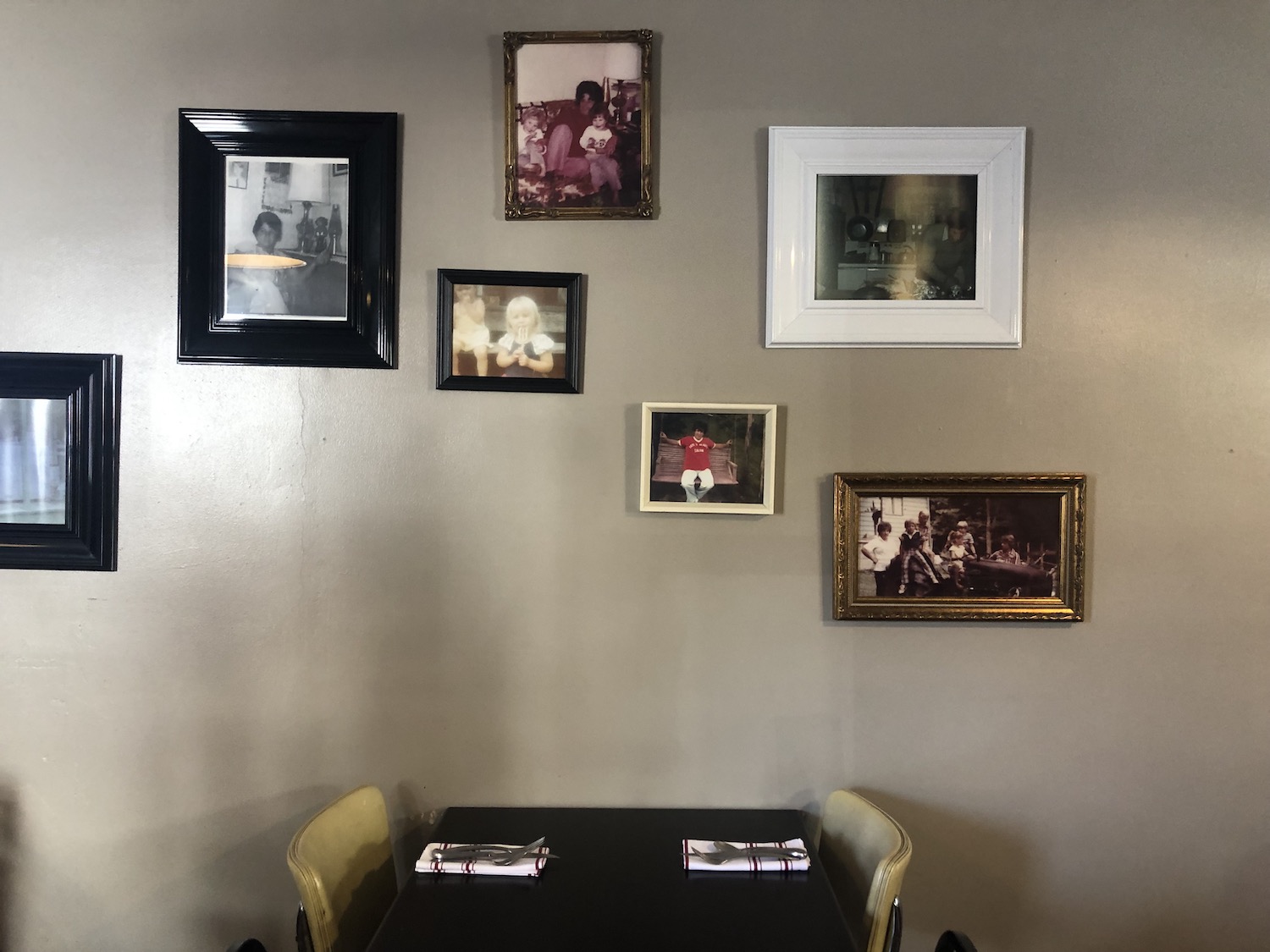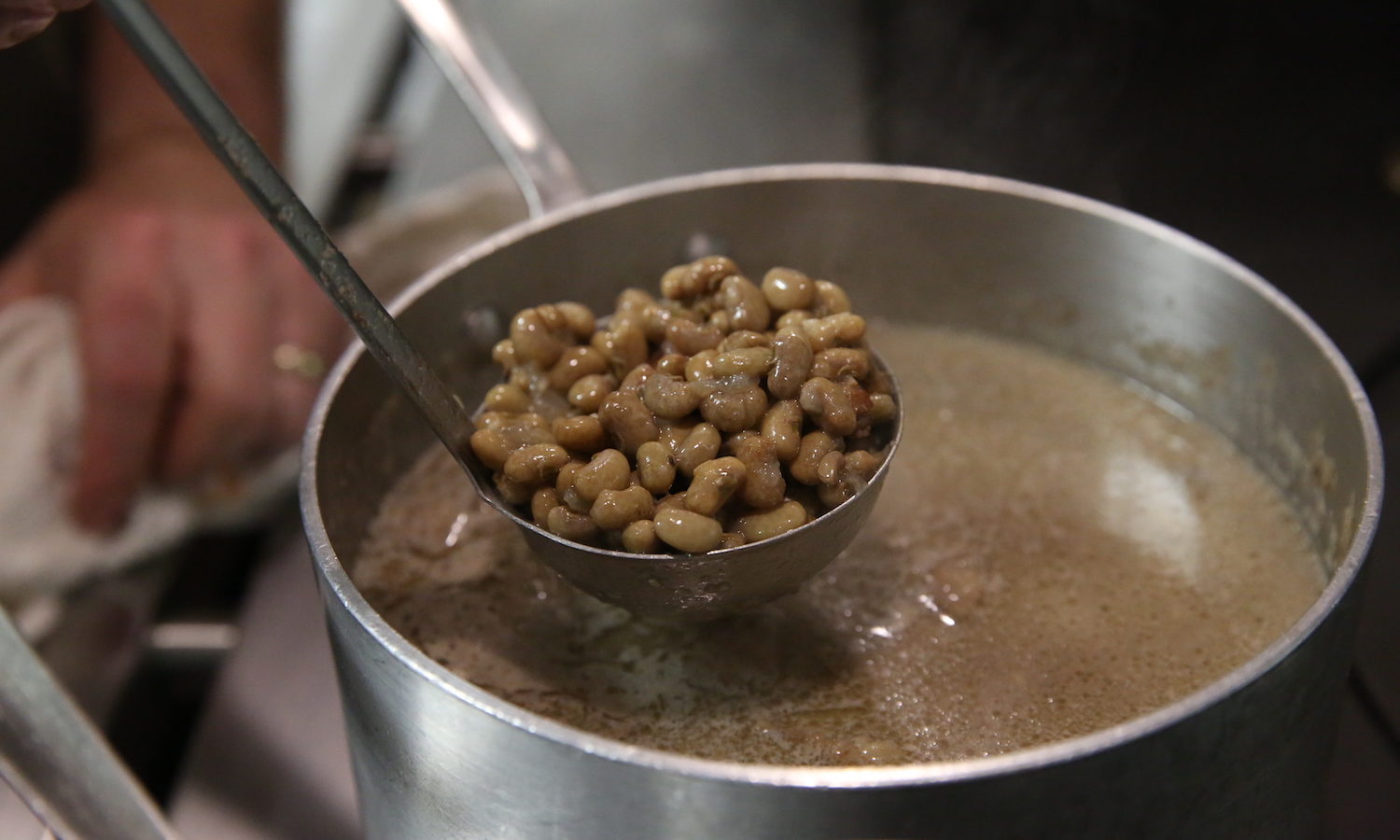“California has nothing on us,” Chef Ian Boden, Owner of The Shack in Staunton, Virginia, tells Food Tank. “Except 70-degree weather 10 months out of the year.”
Boden is cooking in The Shack’s intimate, 120-square-foot (11-square-meter) kitchen for Food Tank and The Crop Trust as part of the #CropsInColor in Appalachia tour. Over a pot of Cherokee long greasy beans, an Appalachian heirloom crop, he explains what makes cooking in Appalachia unique. He also talks about how he finds connections between his mountain roots and his Jewish heritage at the award-winning restaurant.
“We have every climate, we have four seasons, we have water, we have mountains, and we have great wine, beer, spirits, and produce,” Boden says. “We have everything in this state.” And as a chef, shorter growing seasons push him to be more creative. “I think it’s a better place to cook.”
After attending the New England Culinary Institute in Vermont and honing his skills at restaurants in New York City, Boden relocated to Charlottesville, Virginia, to cook at the Glass Haus Kitchen, earning a James Beard Award nomination for Best Chef Mid-Atlantic. In 2014, after returning to his hometown of Staunton, he opened The Shack—a casual, no-frills 26-seat restaurant that, despite its mismatched, low-key décor, has earned features in The Washington Post and Esquire.
Boden prefers cooking in Virginia because of the availability of quality ingredients. “It allows me to do things I couldn’t do in a big city,” he tells Food Tank. And he loves the diversity of the region—in both crops and people.
“They talk about New York as a melting pot, but it’s really here, in the mountains,” Boden says.
With that diversity is a welcoming and inclusive culture. “Anywhere you go in the world, people who have no money are always more open and gracious, and it’s the same thing in the mountain south. These people had nothing, so they pooled resources and if you were hungry, you were fed,” Boden tells Food Tank.

The Shack itself pays homage to a matriarch who never said no to anyone: Boden’s wife’s grandmother, Tissy. In a two-room shack in the Appalachian foothills, Grandma Tissy fed and raised not only her own six children, but half of the neighborhood.
“If someone needed to drop their kids off somewhere that they knew they’d be taken care of, they went to Grandma Tissy’s,” Boden explains. Her shack is reflected in a sketch drawing as the restaurant’s logo, and the walls of the dining room are filled with framed family photos.
Boden finds strong parallels between this Appalachian hospitality—embodied in Grandma Tissy’s legacy—and his own eastern European Jewish upbringing, and his dishes reflect this. “Jewish families share the same ethos as mountain families: you show your love through your stomach,” Boden tells Food Tank.
“One of the big misconceptions about the mountain south is that it’s all Scotch-Irish—that is not true at all,” Boden explains. “We have loads of eastern European history. One of the things I try to do is bridge that gap, and the easiest way for us to do it is this,” he says, presenting a pot of pork schmaltz.

Traditionally, schmaltz is made by rendering the fat of a duck, goose, or chicken. “We make schmaltz with pork fat, which is very un-Jewish,” Boden smiles. But “it’s delicious, and the product is readily available.” The Shack also offers a Caesar salad dressing using schmaltz instead of olive oil, among other schmaltz substitutions. Boden is wearing a shirt that reads, “Schmaltzy South,” The Shack’s tagline.
Boden also relies heavily on preservation, a strong tradition in both Appalachian and Jewish cuisine. “Pickles go with every meal” in the south, he says as he hands out chili pickles with buttermilk whey. And in eastern Europe, growing seasons are even shorter and it’s even colder, so preservation is important.
Tapping into regionally available ingredients to serve traditional mountain food means Boden and his staff work closely with local farmers. Deirdre Armstrong of Harvest Thyme Herbs joins Boden in the kitchen. Her farm is just 10 minutes down the road from The Shack—she is the first farmer Boden worked with when he opened the restaurant.
While Boden slices Virginia heirloom tomatoes, Armstrong shares the history of her crops: the Deerfield, Virginia community has been saving seed for this Oxheart tomato for 50 years, she says, and this Hamilton’s Gold has been growing in Amherst and Buena Vista since the 1920s. The Whippoorwill crowder peas that Armstrong grows for The Shack came from Dr. David Shields, a culinary historian and professor at the University of South Carolina, and she has been saving them for years.
“It’s helped my growing so much to understand how [Boden] is using the product,” Armstrong tells Food Tank. The pair learned how to build a mutually beneficial partnership, and it has led to tastier—and more successful—crops.
Boden’s pig farmer, Clay Trainum of Autumn Olive Farms, also joins for lunch. He tells Food Tank about how he recently incorporated field peas into the diet of his pigs, which adds nutrition to their diets and fixes nitrogen in the soil for the next year. Planting cowpeas have also provided trellis opportunities on the farm.
Boden wants to push farmers to grow new things and promote healthier soil, but their economic viability is important to him, he explains, so they experiment together: “we hold up our end of the bargain and support them.” If a farmer is having trouble selling a surplus of product, Boden will incorporate that product into one of his dishes so he’s able to buy it.

This creativity and abundance of variety shows as we sit for lunch: two tables are filled with pickled pepper varieties, heirloom tomato varieties, pickled cucumbers, squash butter, sorghum butter, and a large cast-iron skillet of cornbread baked in pork schmaltz. Here is another parallel between Appalachia and Boden’s eastern European roots: “You don’t just have one thing on the table,” he explains. “We call it smorgasbord. In the mountain south, they call it dinner.”
Boden’s dishes are simple and let the ingredients speak for themselves. “I speak to the product we’re using instead of masking it,” he explains. In his homemade candy roaster squash butter, he lets the candy roaster—a traditional Appalachian crop—shine by seasoning with just a little sorghum, vinegar, brown sugar, and salt.
This deep commitment to quality ingredients by Boden, his staff, and the farmers he works with isn’t immediately clear when entering The Shack—and that’s intentional.
“It’s called The Shack to make people more comfortable,” Boden explains. It’s a restaurant with no pretense, and while his staff knows the history and importance of each ingredient and dish, they aim to be as educational as clients want them to be. “Not every guest wants to hear it.”
Seventy-five to ninety percent of Staunton residents don’t care about what they’re doing at The Shack, Boden estimates to Food Tank. And while The Shack’s burger and fries cost US$13—about the same price as a burger and fries at the local Five Guys—many locals find it overpriced. Boden emphasizes his support for local farmers and his commitment to paying workers a livable wage. The restaurant also generates tax dollars both directly and indirectly, such as through out-of-towners who spend money at hotels and other local businesses when they visit Staunton to eat at The Shack. Still, his wife Leslie will bring friends into The Shack and pay for their meals, Boden says, just to show them what it’s all about—otherwise, they wouldn’t come in.
“I don’t want to shove anything down anyone’s throat but good food,” Boden says. And having been named one of the restaurants for the Best Burgers in the South and receiving a second nomination for Best Chef Mid-Atlantic by the James Beard Foundation in 2017, he doesn’t have to.
Historical representation of the region on the menu hadn’t been important to him prior to opening The Shack, Boden admits. But in paying homage to Grandma Tissy, he feels it’s his responsibility to do it properly. “And for me, bringing in my Jewish heritage was a no-brainer.”
“To see it come to fruition and to see it help sustain farmers in our region and—whether the town wants to accept it or not—our local economy, that’s a beautiful thing.”
The Crop Trust #CropsInColor campaign sheds light on the complexities, triumphs, and surprises of crop diversity in action. In Phase II (2018–2021), #CropsInColor takes a look at 10 crops, exploring how each in its own way has become a staple in our kitchens, markets, and favorite restaurants, no matter where we live. The campaign highlights the important role that crop diversity plays in our daily lives and the need to safeguard this precious, global common good.
The Crop Trust #CropsInColor campaign is sponsored by Corteva with additional funding provided by the Oak Spring Garden Foundation. Food Tank is the media partner.










